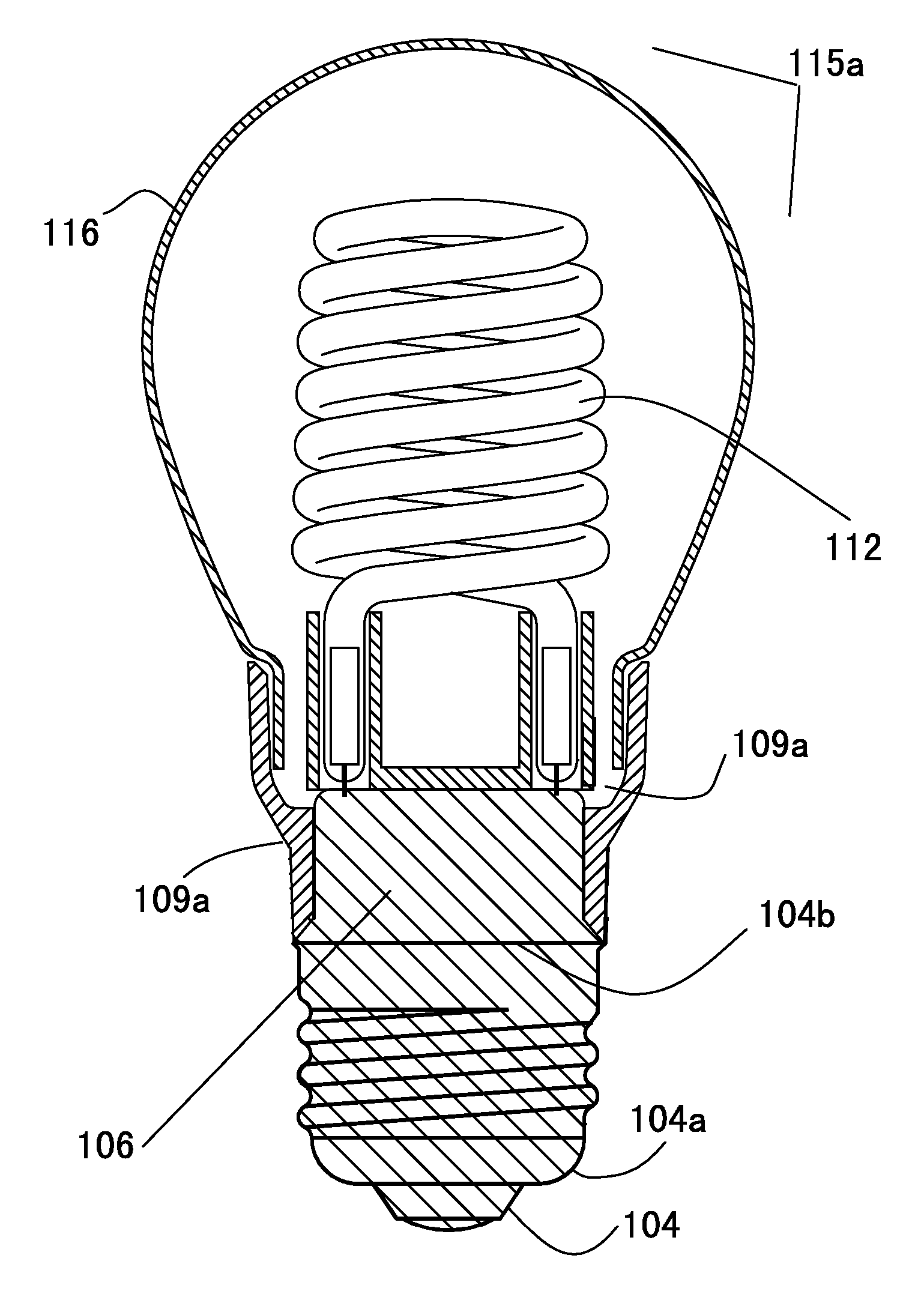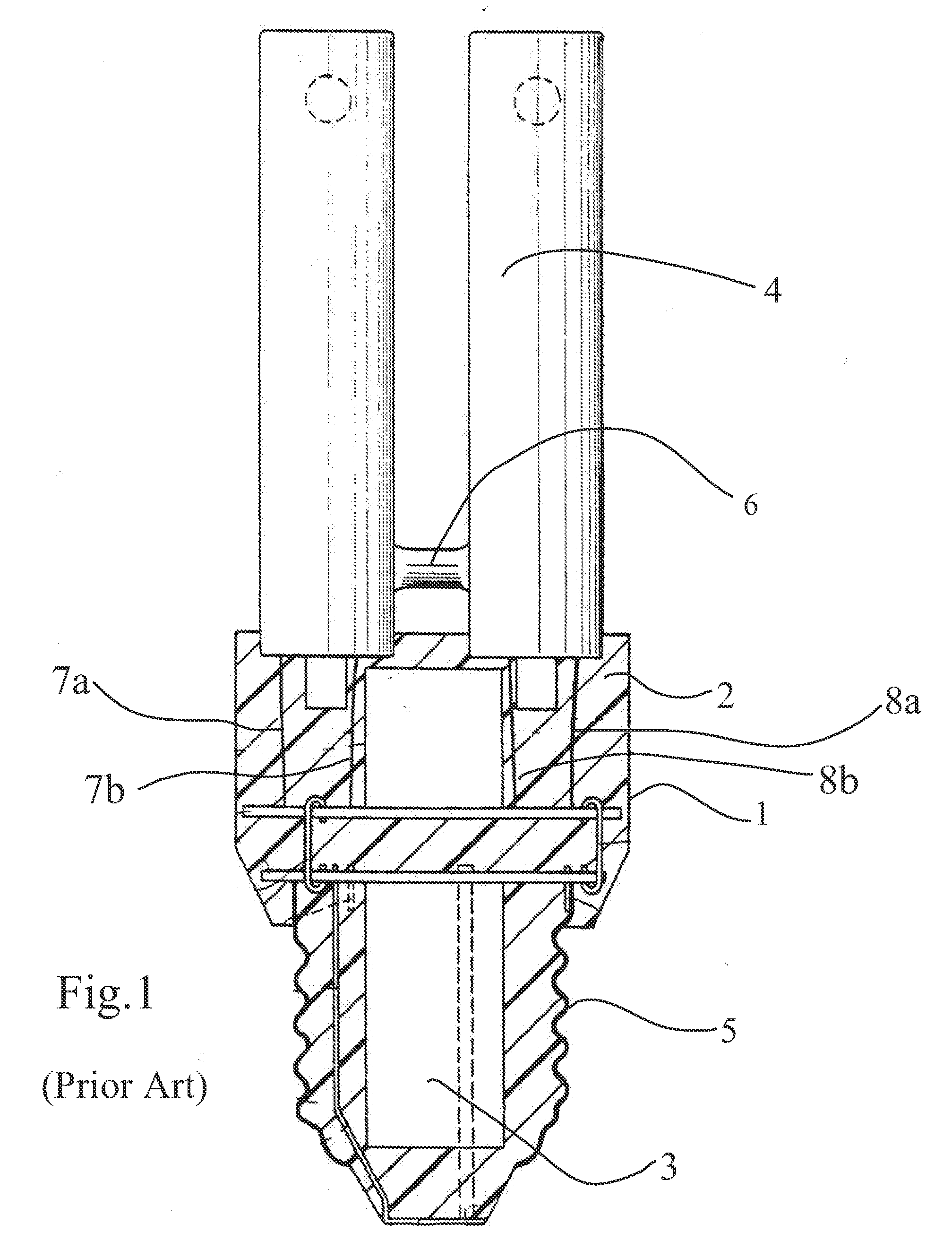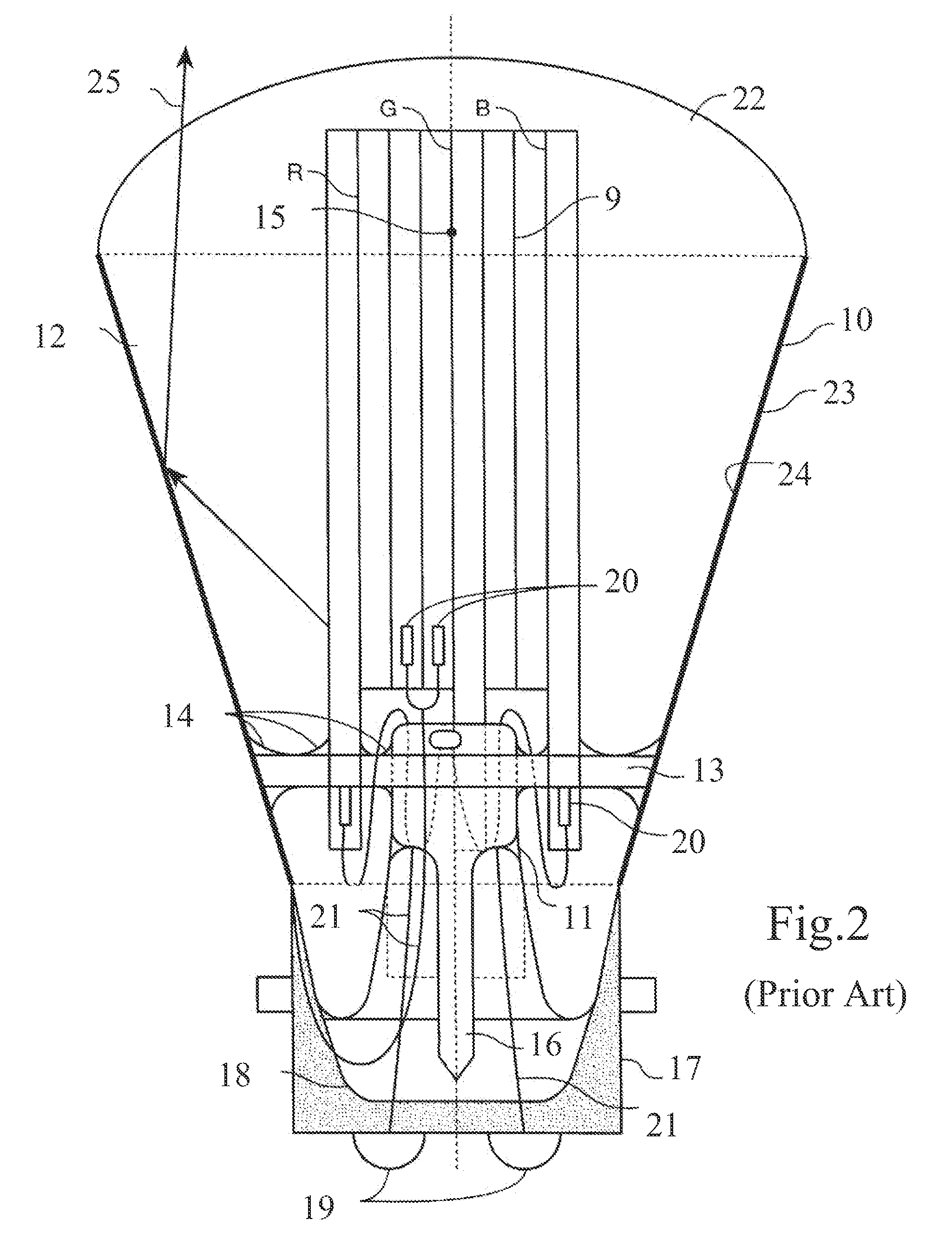CCFL device with a solid heat-dissipation means
- Summary
- Abstract
- Description
- Claims
- Application Information
AI Technical Summary
Benefits of technology
Problems solved by technology
Method used
Image
Examples
embodiment 1
[0122] The first embodiment the present invention provides a CCFL device that has an integral ballast assembly attached with a lamp filament support. Said integral ballast assembly is formed by filling a heat-conductive compound within a detachable mold so that the entire space between the electronic driver and the lamp base are filled with the heat-conductive compound air-tightly. As a detachable and water-tight mold of a pre-determined shape is used to fill the heat-conductive compound, there is no need for a housing to enclose the electronic driver, as the assembly of heat-conductive compound forms its own surfaces after detached from the mold. It is preferred that at least one surface of the assembly of heat-conductive compound connecting to the shell of the lamp base is exposed to air, so that the heat from the assembly can be dissipated directly into the atmosphere. A metallic container connection member is also preferred as it is insulated from the metallic shell of the lamp ...
embodiment 2
[0142] In another preferred embodiment of the present invention, both of the lamp filament support member and the container connection member are attached integrally with the integral ballast assembly by using a specially designed mold. Before the heat-conductive compound is filled inside the mold, the lamp filament support member, the container connection member, the electronic driver and the lamp base are all securely disposed inside. At the same time, the electronic driver is coupled to at least two insulated portions of the shell of the lamp base.
[0143] In order for the lamp filament support member to be securely placed inside the mold, it is fabricated with at least one leg on the side facing away from the CCFL filament, and said at least one leg has a sufficient length to reach the inner bottom of the shell of the lamp base so that it can fix its position within the mold before the heat-conductive compound is filled inside. Alternatively, the lamp filament support member may ...
embodiment 3
[0154] Another embodiment of the present invention provides for forming a CCFL device which does not have a container connection member and therefore looks almost the same as an ordinary incandescent light bulb, as its entire surface above the month line of the lamp base is the surface of the light-transmitting container. This is achieved by affixing the CCFL filament to a smaller lamp filament support member that is attached integrally with the integral ballast assembly. However, a special mold is used to form a circular cavity around the month line of lamp base, so that bottom of the light-transmitting container can be inserted into this circular cavity and is attached rigidly with the lamp base by using a bonding agent that comprises silicone adhesive, low melting point soldering glass or other heat-enduring adhesives.
[0155] Referring to FIG. 15(a), a small filament support member 130 is fabricated with a plurality of legs 130a and 130b. Referring to FIG. 15(b), integral ballast...
PUM
 Login to View More
Login to View More Abstract
Description
Claims
Application Information
 Login to View More
Login to View More - R&D
- Intellectual Property
- Life Sciences
- Materials
- Tech Scout
- Unparalleled Data Quality
- Higher Quality Content
- 60% Fewer Hallucinations
Browse by: Latest US Patents, China's latest patents, Technical Efficacy Thesaurus, Application Domain, Technology Topic, Popular Technical Reports.
© 2025 PatSnap. All rights reserved.Legal|Privacy policy|Modern Slavery Act Transparency Statement|Sitemap|About US| Contact US: help@patsnap.com



